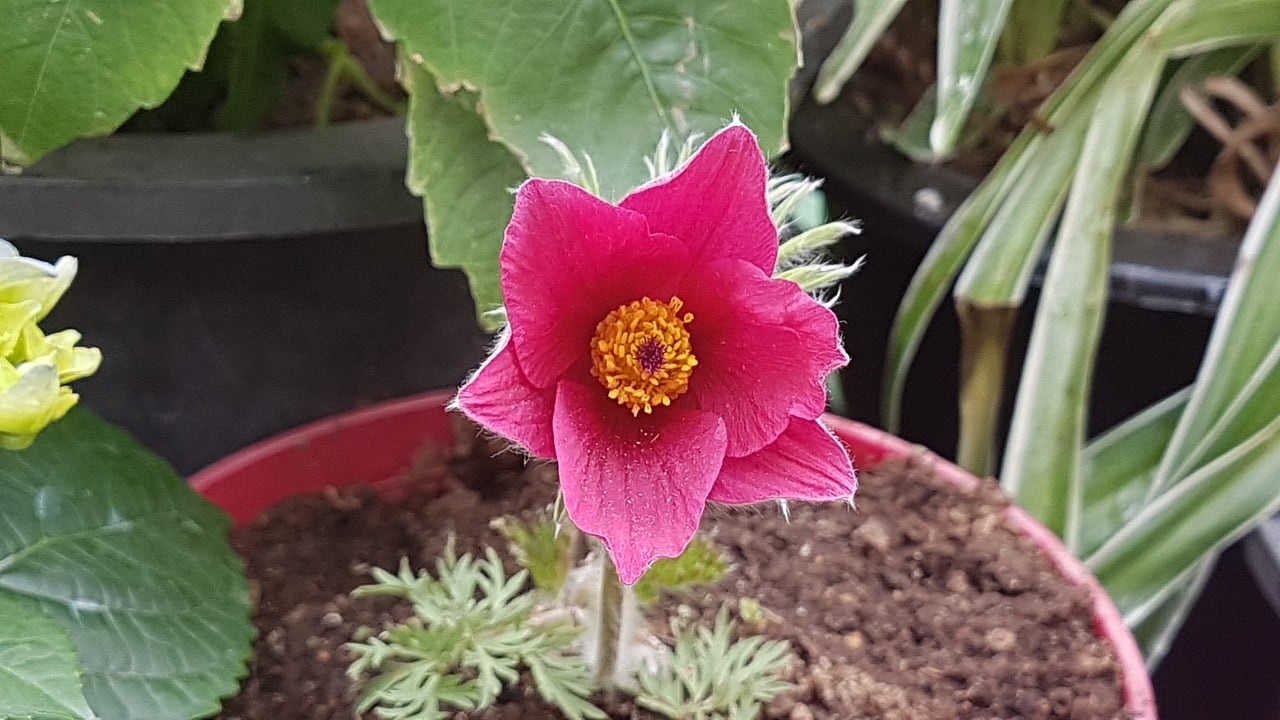Are you a beginner in the world of rooftop gardening? If so, you’re in the right place! In this article, we will explore the best tips and tricks for creating a stunning rooftop garden from scratch. From selecting the right plants to optimizing space and considering structural limitations, we’ve got you covered. So grab your gardening gloves and get ready to transform your rooftop into a thriving oasis that will leave your neighbors envious. Let’s get started!
Choosing the right plants
Consider the climate
When choosing plants for your rooftop garden, it is essential to consider the climate of your region. Different plants thrive in different climatic conditions, so it’s important to select ones that can withstand the temperature, humidity, and rainfall patterns specific to your area. Research which plants are suitable for your climate, and opt for those that are known to flourish in similar conditions.
Select plants suitable for rooftop conditions
Rooftop gardens often face unique growing conditions, such as elevated temperatures, increased exposure to wind, and limited soil depth. It is crucial to choose plants that can adapt to these challenges. Look for plants that have been specifically bred or recommended for rooftop gardening. These plants are usually more resilient and better equipped to withstand the harsh rooftop environment.
Choose plants with shallow roots
Rooftop gardens usually have limited soil depth, so it is wise to select plants with shallow root systems. Plants with extensive or deep roots may struggle to establish and grow in a rooftop environment. Opt for plants that have compact root systems, such as herbs, succulents, and shallow-rooted flowers. These plants are more likely to thrive in the confined space available.
Opt for low-maintenance plants
Maintaining a rooftop garden can be time-consuming, especially if you have a busy schedule. To make your life easier, consider choosing low-maintenance plants that require minimal care. Look for plants that are drought-tolerant, disease-resistant, and don’t require frequent pruning or fertilizing. This way, you can enjoy a beautiful rooftop garden without the stress of constant maintenance.
Assessing the rooftop
Evaluate the structural integrity
Before starting your rooftop garden, it is crucial to assess the structural integrity of your rooftop. Ensure that the roof is in good condition, free from any leaks or damage. If there are any issues with the roof’s structure, it is advisable to address them before proceeding with your garden plans. Consult a professional if you have any doubts or concerns.
Check for weight-bearing capacity
The weight-bearing capacity of your rooftop is another important factor to consider. A rooftop garden can add significant weight to your building’s structure, so it is essential to ensure that it can support the load. Consult a structural engineer to determine the maximum weight your rooftop can bear and plan your garden accordingly. This step is crucial for the safety and longevity of your rooftop garden.
Consider access to sunlight and shade
Sunlight is crucial for the growth of your rooftop garden, so it is important to assess the sunlight availability on your rooftop. Identify areas that receive full sun, partial shade, or full shade throughout the day. This information will help you select the appropriate plants for each area and plan their positioning accordingly. Keep in mind that some plants require more sunlight than others.
Assess the wind exposure
Rooftop gardens are often more exposed to wind compared to ground-level gardens. Assess the wind patterns on your rooftop and identify areas that are particularly windy. Strong winds can damage plants and make it challenging to maintain a healthy garden. Consider planting wind-tolerant species in exposed areas and create windbreaks using tall plants or barriers to protect more delicate plants.

Planning the layout
Determine the purpose and functionality
Before designing your rooftop garden layout, think about its purpose and functionality. Are you looking to create a serene retreat where you can relax and unwind? Or do you envision a vibrant space for entertaining guests? Understanding the purpose of your garden will help guide your layout decisions. Consider the activities you want to enjoy in your garden and plan the space accordingly.
Consider the available space
Rooftop gardens come in all shapes and sizes, so it’s vital to consider the available space when planning the layout. Take accurate measurements of your rooftop and create a scaled drawing to visualize how different elements will fit together. Remember to leave enough space for pathways and seating areas while maximizing the planting area. Careful space planning will ensure a functional and visually appealing garden.
Create zones for different activities
Dividing your rooftop garden into different zones can help maximize its functionality and create an organized layout. Consider creating separate zones for lounging, dining, gardening, and other activities you wish to incorporate. By defining specific areas, you can optimize the use of space and create a sense of order within your garden. Each zone can have its own unique design and ambiance.
Design with aesthetics in mind
While functionality is important, don’t forget to prioritize aesthetics when planning your rooftop garden layout. Choose a design style that suits your taste and complements the overall architecture of your building. Consider incorporating elements like vertical gardens, focal points, and color schemes to create visual interest. Aim for a cohesive and visually pleasing garden that enhances the beauty of your rooftop.
Installing appropriate drainage
Ensure effective waterproofing
Waterproofing is a critical component of any rooftop garden. Ensure that your rooftop is adequately waterproofed to prevent water leakage into the building below. Consult a professional waterproofing contractor to assess and repair any existing issues. Effective waterproofing will protect your rooftop, minimize damage, and ensure the longevity of your garden.
Add drainage systems to prevent waterlogging
Proper drainage is essential for the health of your rooftop garden. Without adequate drainage, excess water can accumulate and lead to waterlogged soil, which can be detrimental to plant roots. Install a suitable drainage system such as perforated pipes or drainage mats to ensure the efficient removal of excess water. This will help prevent waterlogging and maintain optimal growing conditions for your plants.
Use lightweight and permeable materials
When choosing materials for your rooftop garden, opt for lightweight and permeable options. Heavy materials can add unnecessary weight to your rooftop, while impermeable materials can hinder water drainage. Consider using lightweight containers, breathable fabrics for shade coverings, and permeable pavers for pathways. These materials will minimize the load on your rooftop while allowing water to drain freely.
Consider the slope for proper water flow
To ensure proper water flow and drainage, it is important to consider the slope of your rooftop. A slight slope towards the drainage outlets will help water run off more efficiently. Consult a professional to assess and adjust the slope if necessary. Proper slope alignment will prevent water from pooling on your rooftop and facilitate efficient watering and drainage.

Choosing containers or raised beds
Select containers suitable for rooftop gardening
When growing plants on a rooftop, containers are a popular choice for gardening vessels. Select containers that are suitable for rooftop gardening, such as lightweight plastic or fiberglass pots. These materials are not only easy to handle and move but also minimize the load on your rooftop. Avoid heavy or fragile containers that may damage your rooftop or become a safety hazard.
Consider the material and size of containers
The material and size of your containers can significantly impact the health and growth of your plants. Choose containers made of breathable materials that allow air and moisture to reach the roots. Additionally, consider the size of your plants when selecting containers. Ensure that the containers are spacious enough to accommodate the root systems and provide room for growth.
Opt for self-watering containers for convenience
Maintaining proper moisture levels in your rooftop garden can be a challenge, especially during hot or dry periods. To make watering more convenient, opt for self-watering containers. These containers have built-in reservoirs that provide a constant supply of water to the plants, reducing the need for frequent watering. Self-watering containers can help ensure your plants stay nourished and hydrated even when you’re away.
Explore the benefits of raised beds
Raised beds offer numerous advantages for rooftop gardening. They provide deeper soil depth, better drainage, and improved aeration compared to traditional containers. Raised beds also make it easier to organize and separate different plantings. Consider incorporating raised beds into your rooftop garden design for optimal plant growth and a visually appealing layout.
Providing adequate irrigation
Install a reliable watering system
Proper irrigation is essential for the health and vitality of your rooftop garden. Installing a reliable watering system will help ensure your plants receive adequate moisture, especially during hot and dry periods. Consider installing an automated drip irrigation system that delivers water directly to the plant roots, minimizing water waste and optimizing efficiency. This will make watering your garden more convenient and efficient.
Consider drip irrigation for water efficiency
Drip irrigation is a water-efficient method that delivers water directly to the plants’ roots, minimizing evaporation and water waste. Consider using a drip irrigation system in your rooftop garden to conserve water and promote healthy plant growth. Drip irrigation can be easily installed and allows you to control the water flow and timing, ensuring your plants receive the right amount of moisture.
Automate irrigation for convenience
To make watering your rooftop garden more convenient and consistent, automate your irrigation system. Use timers or smart controllers to schedule regular watering cycles. This will ensure your plants receive consistent moisture without the need for manual watering. Automating your irrigation system will save you time and effort while promoting the overall health of your rooftop garden.
Monitor moisture levels regularly
Even with automated systems in place, it is important to regularly monitor the moisture levels in your rooftop garden. Different plants have varying water requirements, and environmental factors can affect the moisture levels. Use a moisture meter or simply check the soil’s moisture by hand. This way, you can make any necessary adjustments to your watering routine and ensure your plants are thriving.

Managing sunlight and shade
Use shade cloth or umbrellas for protection
To protect your rooftop garden from excessive sunlight and heat, consider using shade cloth or umbrellas. These shade coverings can be easily installed and provide relief during hot summer months. Choose shade cloth or umbrellas that provide the desired amount of shade without obstructing airflow or limiting sunlight entirely. This will help create a comfortable environment for your plants and prevent heat stress.
Utilize trellises and pergolas for shade
Trellises and pergolas not only add visual interest to your rooftop garden but also serve as functional shade providers. Install trellises or pergolas alongside walkways or seating areas to create shaded spots for relaxation. Choosing climbing plants like vines or flowering creepers will not only provide shade but also add a lush and vibrant element to your garden design.
Optimize sun exposure for different plant needs
While shade is important, it is equally crucial to optimize sun exposure for plants with varying light requirements. Some plants thrive in full sun, while others prefer partial shade. Take advantage of the different sunlight zones on your rooftop and position plants accordingly. Group sun-loving plants in areas with maximum sunlight and provide shade for those that require it. This will ensure each plant receives the appropriate light intensity.
Consider installing retractable awnings
For ultimate flexibility in managing sunlight and shade, consider installing retractable awnings. These adjustable coverings can be extended or retracted as needed, allowing you to control the amount of shade in your rooftop garden. Retractable awnings are particularly useful in areas where sunlight availability varies throughout the day. They provide versatility and allow you to adapt your garden’s sun and shade requirements.
Selecting appropriate soil and fertilizers
Choose lightweight and well-draining soil mix
The selection of the right soil mix is crucial for the success of your rooftop garden. Opt for a lightweight soil mix that is well-draining and promotes healthy root growth. Lightweight soil mixes reduce the load on your rooftop while allowing excess water to drain freely. Consider using a combination of organic compost, perlite, and vermiculite to create a well-aerated and nutrient-rich soil environment.
Add organic matter for improved fertility
To promote optimal plant growth and fertility, incorporate organic matter into your rooftop garden soil. Organic matter improves soil structure, enhances water retention, and provides essential nutrients for plants. Add compost, well-rotted manure, or worm castings to your soil mix to increase its organic content. This will help create a fertile and thriving environment for your rooftop plants.
Use slow-release fertilizers for long-term nourishment
Rooftop gardens typically have limited access to soil nutrients, so it is important to provide long-term nourishment for your plants. Slow-release fertilizers are ideal for rooftop gardening as they gradually release nutrients over an extended period. This ensures a steady supply of essential elements for plant growth and reduces the need for frequent fertilizing. Choose a balanced slow-release fertilizer specifically formulated for container plants.
Test soil pH and nutrient levels
Regularly testing your rooftop garden soil for pH and nutrient levels is essential for maintaining optimal plant health. Different plants have specific pH and nutrient requirements, and imbalances can hinder their growth. Use a soil testing kit or send samples to a laboratory for analysis. Adjust the soil pH and nutrient levels accordingly to ensure your plants receive the necessary elements for healthy growth.
Considering wind protection
Create windbreaks with tall plants or barriers
The strong winds often experienced on rooftops can damage plants and hinder their growth. Create windbreaks using tall plants, such as ornamental grasses, bamboo, or shrubs, to provide protection against the wind. These plants act as barriers and help divert the airflow, creating a more sheltered environment for other plants. Ensure that the windbreaks are positioned strategically to maximize their effectiveness.
Use wind-tolerant plants in exposed areas
In areas with particularly high wind exposure, select plants that are known to be wind-tolerant. These plants have adapted to withstand strong winds and will be more likely to thrive in such conditions. Look for plants with flexible stems, small or narrow leaves, and strong root systems. Utilizing wind-tolerant plants will help ensure the longevity and resilience of your rooftop garden.
Install wind chimes or other noise deterrents
Strong winds can create noise disturbances in your rooftop garden, affecting your enjoyment of the space. Install wind chimes or other noise deterrents to mitigate the impact of wind noise. Wind chimes create soothing sounds that can mask the noise of strong winds, creating a more peaceful atmosphere. Choose wind chimes that complement your garden’s aesthetic and add a touch of musical ambiance.
Avoid delicate or lightweight decorations
When decorating your rooftop garden, it is important to choose elements that can withstand the wind. Delicate or lightweight decorations may get damaged or blown away in strong winds, posing a safety risk and causing unnecessary maintenance. Opt for sturdy and wind-resistant decorative items such as metal sculptures, durable outdoor furniture, or heavy pots. These elements will add beauty to your garden without the risk of damage.
Enhancing the rooftop garden
Incorporate seating and outdoor furniture
To fully enjoy your rooftop garden, incorporate comfortable seating and outdoor furniture. Choose furniture that is weather-resistant and suitable for rooftop conditions. From lounge chairs to cozy sofas, consider the available space and purpose of your garden when selecting seating options. A thoughtfully designed seating area will encourage relaxation and make your rooftop garden a welcoming outdoor retreat.
Add decorative elements for visual appeal
Enhance the visual appeal of your rooftop garden by incorporating decorative elements. From colorful planters to decorative statuary, choose elements that complement your garden’s overall design aesthetic. Consider adding artwork, sculptures, or wind spinners to create focal points and visual interest. Decorative elements add a personal touch and make your rooftop garden a unique and inviting space.
Utilize vertical gardening for space optimization
Maximize your rooftop garden space by utilizing vertical gardening techniques. Vertical gardens allow you to grow plants vertically on walls, trellises, or hanging structures. This method is ideal for small rooftop gardens as it maximizes planting area without encroaching on valuable floor space. Choose climbing plants or trailing vines for vertical gardens, and enjoy a lush and green environment.
Install lighting for night-time ambiance
Extend the usability and beauty of your rooftop garden into the evening hours by installing lighting features. Add string lights, lanterns, or spotlights to create a warm and inviting ambiance. Lighting enhances the aesthetics of your garden, highlights focal points, and provides safety during nighttime gatherings. Choose energy-efficient options like LED lights to minimize electricity consumption.
By following these comprehensive tips, you can create a rooftop garden that is not only functional and beautiful but also well-suited to your specific climatic conditions. From choosing the right plants to planning the layout and ensuring proper drainage, each aspect plays a crucial role in establishing a successful rooftop garden. Whether you’re a beginner or an experienced gardener, these guidelines will help you transform your rooftop into a thriving oasis. Embrace the joys of rooftop gardening and enjoy the benefits of nature right at your fingertips.
